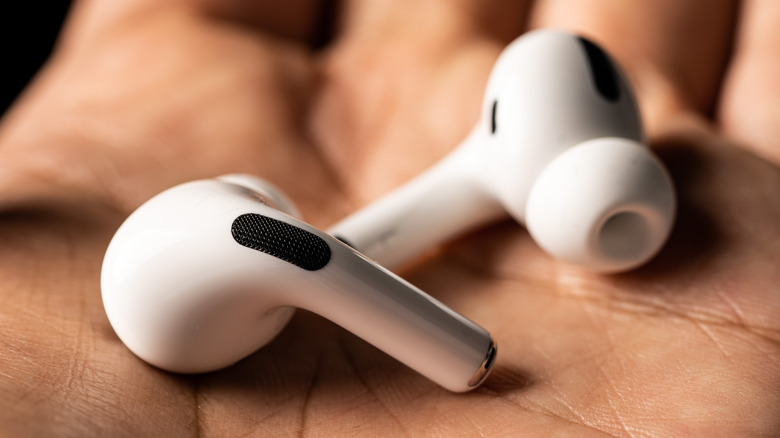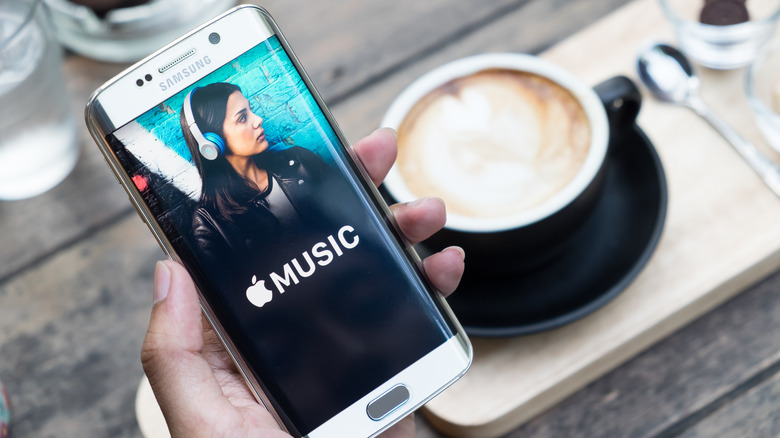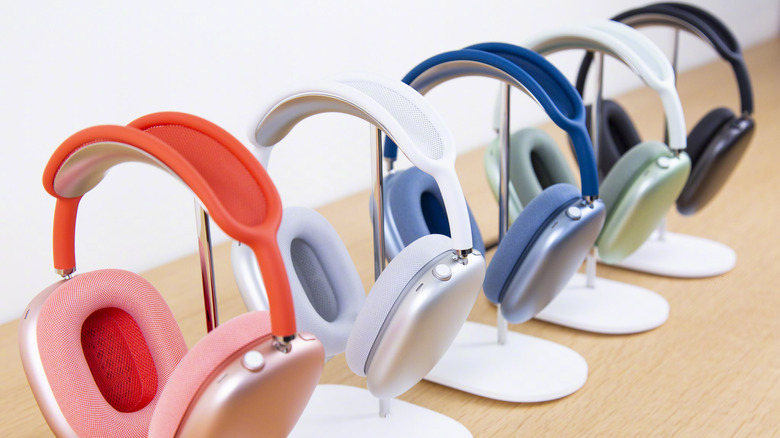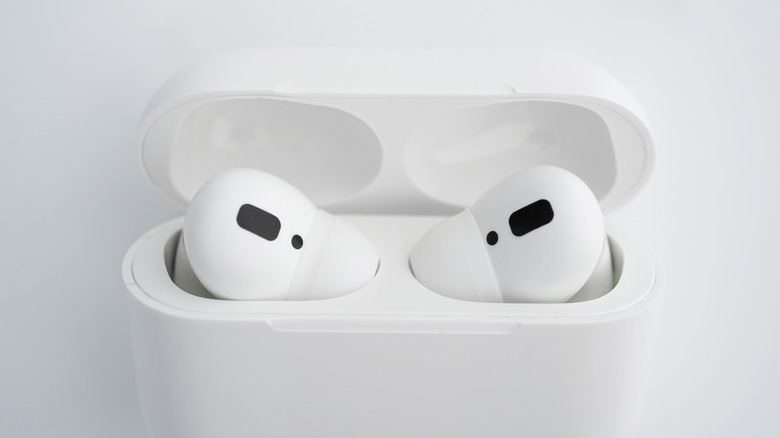How To Use Apple AirPods Features On Your Android Without Rooting
Apple's AirPods are the most popular wireless earbuds on the market, though the number of competing products is growing rapidly. In fact, according to Business of Apps, the company sold some 110 million units in 2020 alone. One of the things that make AirPods so popular is the way the earbuds integrate with the rest of Apple's ecosystem — extending it, and adding additional features. For example, Siri integration is much easier with AirPods, with the virtual assistant able to quickly respond to texts and phone calls.
While AirPods are often thought of exclusively in the context of Apple users on iPhone, Mac, and iPad, the product works well with Android phones and tablets, too... but only by offering a basic Bluetooth headset experience, the same kind you can get from a much cheaper alternative. Connecting AirPods to an Android device is very simple, Apple explains, but if you're looking for some of the more advanced features iPhone owners enjoy, you'll have to turn to unofficial sources for help.
Third-party Android apps enable some features
If you want to use certain AirPods features when the earbuds are paired with an Android phone, you'll need to turn to third-party apps like Assistant Trigger. These apps don't guarantee that you'll be able to use every feature, and they may also work imperfectly — if they work at all. Ideally, you'll want to purchase a pair of earbuds that are designed to work with Android like the Galaxy Buds 2 or Pixel Buds if that's the platform you use most often.
If you're deadset on AirPods or only use an Android device on occasion, however, these apps may be a solid compromise between full AirPods functionality and the basic Bluetooth headset experience you get with Android. In the case of Assistant Trigger, for example, the developer claims its app can be used to display the AirPods battery level using the double-tap or squeeze gestures, depending on which model you own. The app also claims to enable summoning Google Assistant with AirPods instead of the Siri assistant found on iPhones, and it may also enable automatic pause and resume functionality on the Pro model by enabling in-ear detection.
Other similar Android apps include MaterialPods, which enjoys a higher user rating than Assistant Trigger, and AirDroid. You may need to try multiple apps before you find one that works well with your particular AirPods model and smartphone, but it's the best shot Android users have at a more robust experience with Apple's earbuds.
What you're missing by using AirPods with Android
There are two major features you're missing out on if you choose to use AirPods with an Android phone versus an iPhone: Spatial Audio and hands-free Siri. Spatial Audio is Apple's surround sound algorithm that virtualizes a sound stage for audio streaming to your AirPods. If you use music streaming services like Apple Music, you won't get the Spatial Audio surround sound experience from the AirPods if they're connected to an Android device. Likewise, it's the same story with TV shows and movies — you'll only get the base stereo experience, which is a good argument for ditching the AirPods in favor of an Android-friendly alternative.
Meanwhile, hands-free Siri is pretty self-explanatory. Siri only works on Apple devices, and Android is no exception. While you may be able to get Google Assistant working with a few taps or squeezes, you can't re-program AirPods to listen for the Google Assistant wake word instead of Siri.
Lastly, you won't be able to update the AirPods' firmware. Sadly, firmware updates require the use of a Mac, iPad, or iPhone. If you own another Apple device, that's no big deal; just pair your AirPods to that device, put them on the charger, and wait. It'll update eventually. If you don't own an Apple device, you'll sadly be stuck with whatever firmware your AirPods had installed when you purchased them.
How to pair AirPods to your Android phone
Getting the special features to work aside, actually pairing AirPods with your Android device may be easier than you think. It's the same on every AirPods model unless you have the AirPods Max, which involves a slightly different — but still simple — process, according to Apple. To pair AirPods to your Android phone:
- Make sure both earbuds are in the case and open the lid.
- Press and hold the button on the back of the case for about five seconds. The LED indicator should be flashing white.
- Go to your phone's Bluetooth settings (typically found under Settings > Connections > Bluetooth), tap on the AirPods entry in the list of devices, and confirm the connection.
If you have the AirPods Max model, you'll need to do the following instead:
- Make sure you're not wearing your AirPods Max.
- Press and hold the Noise Control button (the oval button) for five seconds. The LED indicator next to the Lightning port on the right ear cup should be flashing white.
- Go to your phone's Bluetooth settings, tap on your AirPods Max entry in the devices list, and confirm the connection.
From there on out, AirPods will remember the last device it was paired with and should automatically connect to your phone every time you wear them.



